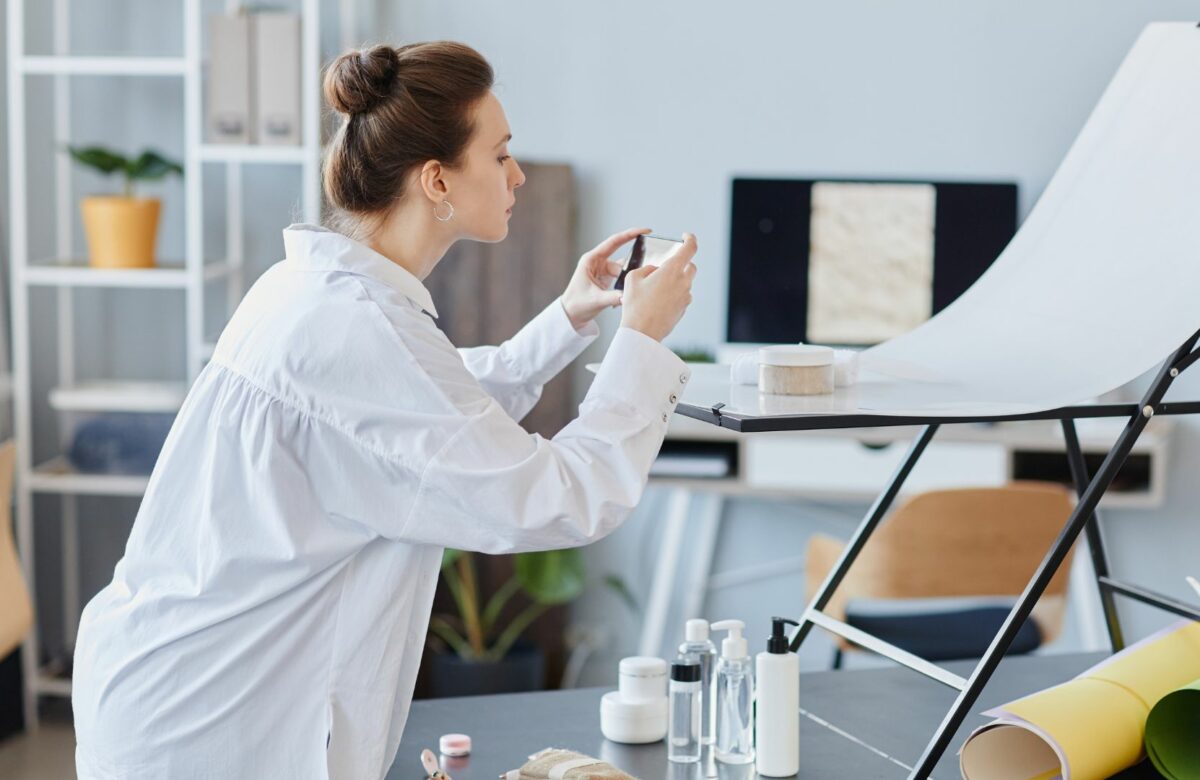When Should You Use AI-Generated Product Pictures vs. the Real Thing?
In the age of AI, product photography has evolved. You no longer need a studio, a photographer, or even the physical product to create stunning visuals. But when does it make sense to use AI-generated product pictures, and when should you stick to the real thing?
As a digital marketing agency specializing in AI-generated content and lifestyle product photography, we’ve helped multiple brands navigate this decision. Here’s our no-nonsense guide to choosing the right approach for your business.
When to Use AI-Generated Product Pictures
1. You’re Launching a New Product
- Scenario: Your product is still in development, but you need visuals for pre-launch marketing.
- Why AI Works: AI can generate realistic mockups with some work and attention to detail, even if the product doesn’t exist yet.
2. You Need Endless Variations
- Scenario: You sell customizable products (e.g., phone cases, mugs, or T-shirts) and need visuals for every possible design.
- Why AI Works: AI can generate hundreds of variations in seconds, saving you time and money.
3. Budget Constraints
- Scenario: You’re a startup or small business with limited resources for professional photography.
- Why AI Works: AI-generated images cost less than traditional photoshoots, with no need for studios, lighting, or photographers.
4. Testing Concepts
- Scenario: You’re experimenting with new product ideas or marketing angles.
- Why AI Works: AI lets you test visuals without committing to production.
When to Use Real Product Photography
1. Building Trust with Authenticity
- Scenario: You’re selling high-end or luxury products where trust is critical.
- Why Real Photos Work: Authentic visuals show customers exactly what they’re buying, reducing returns and building credibility.
2. Showcasing Texture & Detail
- Scenario: Your product’s appeal lies in its texture, material, or craftsmanship (e.g., leather goods, food, or handmade items).
- Why Real Photos Work: AI struggles to replicate fine details like stitching, grain, or gloss.
3. Lifestyle Context Matters
- Scenario: You need to show your product in real-world settings (e.g., a couch in a living room or a backpack on a hiking trail).
- Why Real Photos Work: Authentic lifestyle shots help customers visualize using your product in their daily lives.
4. Legal or Compliance Reasons
- Scenario: Your industry requires accurate representation (e.g., pharmaceuticals, food, or cosmetics).
- Why Real Photos Work: Misleading visuals can lead to legal issues or customer backlash.
Hybrid Approach: The Best of Both Worlds
Why choose when you can have both? Many brands combine AI and real photography for maximum impact:
- AI for Mockups & Concepts: Use AI to test ideas, create variations, or visualize products that don’t exist yet.
- Real Photos for Final Marketing: Once the product is ready, invest in professional photography for authenticity and trust.
How We Help You Decide
- AI-Generated Product Photos: We use cutting-edge tools to create realistic visuals in minutes—perfect for testing ideas or launching new products.
- Lifestyle Product Photography: Our in-house team captures your product in stunning detail, with authentic lighting and settings.
- Hybrid Solutions: We combine AI and real photography to give you the best of both worlds.
Final Takeaway: AI-generated product pictures are a game-changer for speed, cost, and creativity—but they can’t replace the authenticity of real photography. The right choice depends on your goals, budget, and audience.

